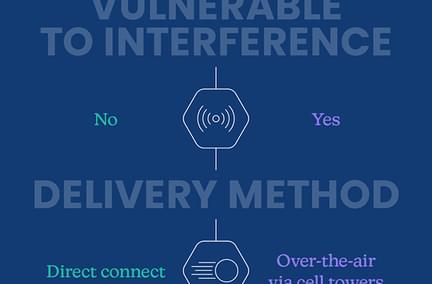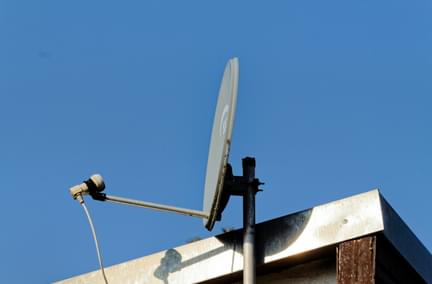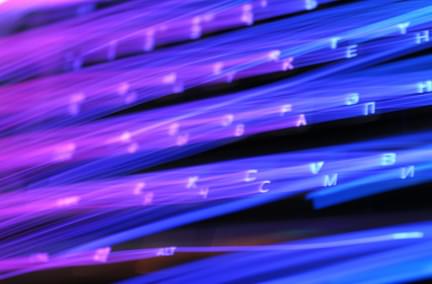6 Big Benefits of Fiber for Remote Workers
Feb 7, 2023 | Home Technology, Work from Home

Now that working from home has become more accepted and, in many cases, the new normal, many part-time and full-time employees rely on high-speed internet service to do their jobs. Companies big and small all over the country have adopted either a hybrid or full work-from-home model. If one lesson came out of the last few years, it would be the need for reliable internet for remote work and work-from-home jobs.
Employees who used to work in offices suddenly found themselves with remote work-from-home jobs that changed their route to their desks from driving to work to commuting to the home office, often in the dining room or spare bedroom. In addition, traditional office-bound jobs such as administrative assistant, call center customer service representative, data entry clerk, and other customer support roles and job titles had to adjust to a new environment. No longer could they rely on a robust at-work internet system with plenty of bandwidth for everyone.
This new WFH landscape proved quite challenging for human resources departments, which struggled to help employees find or maintain a work-life balance with these new remote positions. This proved a bit more difficult for some employees, depending on their job type. For many HR professionals, this staffing issue of moving from in-person to remote work proved quite challenging due partly to each team member’s home internet service.
Employees with older internet technology struggled with the new work-at-home environment because slow connection speeds hindered their productivity.
To top it all off, schools were closed, too, so families found themselves in the difficult position of juggling online time among the kids trying to do school work and the adults trying to do office work. Some jobs, such as sales representative, data entry jobs, recruiters monitoring job postings, or social media managers keeping tabs on online activities in real-time required employees to be online at certain times of the day. They didn’t have the option of a flexible schedule to hop offline so their kids could Zoom with the class.
All this shift in the workplace environment exposed a need for faster, more reliable internet for everything from entry-level jobs to senior management.
Faster
Before fiber internet came along, internet delivery methods were okay at best but not great. And sometimes they weren’t even okay. DSL and satellite are both super slow, and cable internet has severe limitations that will be tapped out soon. Copper’s days are numbers.
However, at its peak, fiber internet can transmit over 700 times faster than cable, speeds copper cannot handle. And it is intrinsically more scalable than copper. Fiber can carry far more bandwidth than is required today and will likely not be full for decades to come, if ever.
More reliable
Traditional internet delivery methods have a vulnerability they can’t control: interference. The interference can come from weather or other sources, such as nearby electronics or power sources. For example, copper is highly conductive, so a copper cable is susceptible to signal distortion or loss, decreasing the quality and reliability of the signal. Satellite is even more vulnerable to outside sources, such as a thunderstorm or high winds that can knock out the satellite signal.
Fiber does not use electricity to send internet signal, instead relying on light pulses transmitted down a strand of glass protected by a coating to keep the signal contained. As a result, weather and electronic interference do not affect fiber optics.
Clearer
Not only is fiber more reliable, but the signal is clearer and purer, as it does not need to be boosted as much along the way from Point A to Point B. Both copper cable and DSL begin to lose signal strength very shortly after leaving the source.
DSL, for example, can only travel a maximum of 18,000 feet before it has to be boosted. Copper cable signal can transmit up to 100 meters (328 feet) before it has to be boosted. Fiber optic signal, on the other hand, can travel over 25 miles before it needs a boost. The fewer boosts, the purer the signal. So fiber is, by far, the clearest signal of any land-based delivery system.
Symmetrical speeds
If you’ve ever run a speed test on your existing internet service, you’ll likely notice a huge disparity between upload and download speeds, with upload being significantly slower than download. This is mainly due to the provisioning of the service, with more emphasis put on download because download is how you view videos, stream, and pull other data from the internet to your device.
However, many modern applications, such as video conferencing and file sharing, work much better on a symmetrical network where upload and download are both high-speed. Fiber internet typically provides symmetrical speeds because bandwidth is less of an issue than on other media.
More devices online at once
One huge benefit of higher bandwidth is the ability to have multiple devices online at the same time and not slow down the connection speed. If a family of four, for instance, has both parents working from home, both kids doing homework, and then in the evening wants to relax streaming Amazon Prime or Netflix or gaming, they can do it all with fiber without worry about using up all their bandwidth.
No more worrying whether you’ll get kicked off when someone else hops online or pressing a controller button and getting just enough frustrating lag to lose the game. Fiber internet delivers the best ping and latency on the market.
Becoming less expensive
Even though low-loss fiber optic technology was invented in the 1970s, the main reason internet service providers stuck with copper cable for so long and hesitated to upgrade to fiber optics was the cost. Fiber was simply too expensive to deploy. Those expenses would have to be passed along to consumers unwilling or unable to pay high prices for internet service.
But thanks to its ever-growing popularity, fiber costs have come down to the point where many fiber internet services are around the same monthly cost as traditional copper. In some cases, the cost per megabit is lower for fiber than copper.
Wrap up
Our online world has changed dramatically over the past few years. As a result, high-speed internet is no longer a luxury. We depend on it for many critical areas of our lives, from keeping up with the news to accessing healthcare to job searches. Get the most out of your online world with fiber internet.
- work from home
- remote work
- WFH
- benefits of fiber






